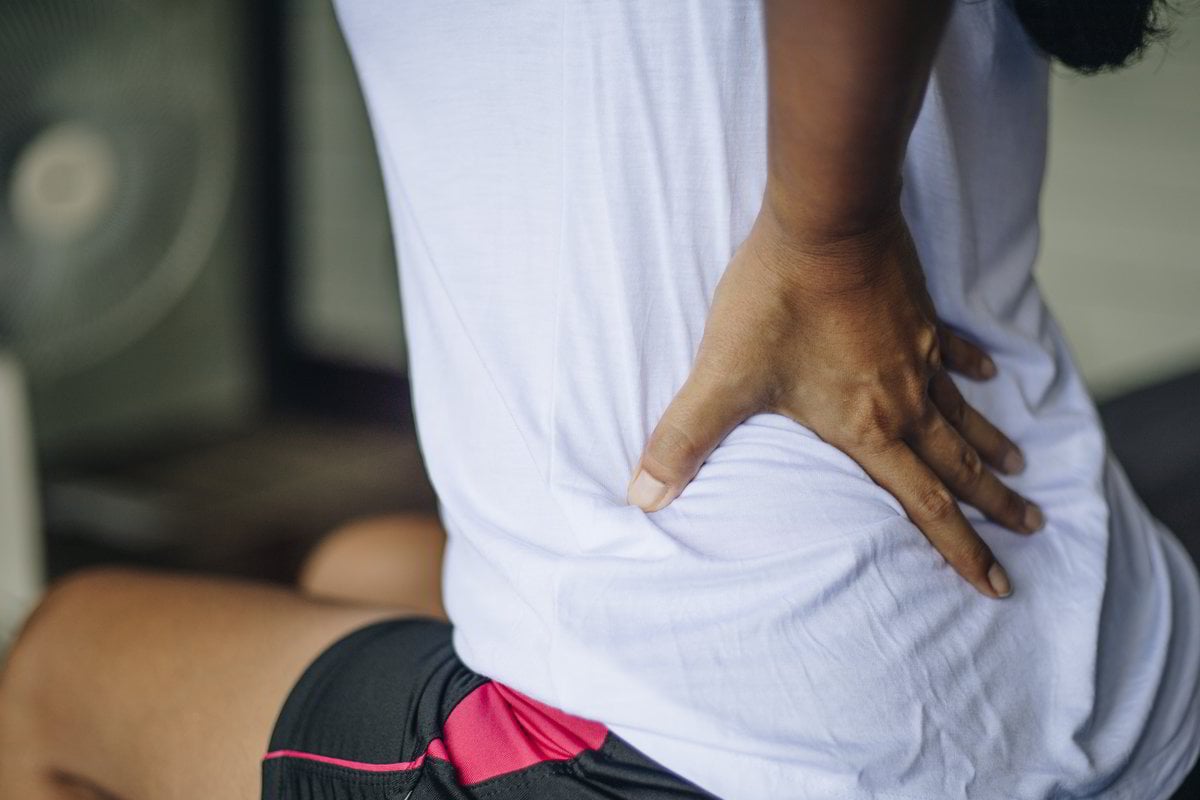
Whether you're back in the office enjoying some of the small pre-covid delights (attending real-life meetings, watching the office dog do cute stuff, celebrating your colleague's birthday with a Woolies mud cake), or still WFH in your fave trackies, jumper and high-bun combo, there's one teeny little thing that always manages to stay constant: Your crippling lower back pain.
Because sitting on a chair for up to nine hours a day can do things to you.
Listen to Mamamia's podcast for your face, You Beauty, where Kelly recommends a pore treatment she uses on her back. Yes, her back. Post continues below.
We spoke to Scott Coleman, founder and CEO of Preventure to find out more about lower back pain, including the most common causes and how we can fix it. Coleman is also a qualified physio and has worked with Australia's top athletes at the AIS and Athletics Australia - so he has quite a few feelings about back pain.
Why do I have back pain?
So, what's the go? Why do we feel like we're creeping up on our 87th birthday? "According to the Australian Institute of Health and Wealthfare, 70 to 90 per cent of Australians will experience back pain at some point in their lives." Yep. That's a helluva lotta sore backs getting around.
Coleman said that while it is super common to experience back pain, apparently not all back pain is the same. "The source of this pain can be physical (coming from ligaments, joints and muscles), or it can be psycho-social (due to stress and the brain mis-reading messages from the muscles and nerves in the back)."


Top Comments